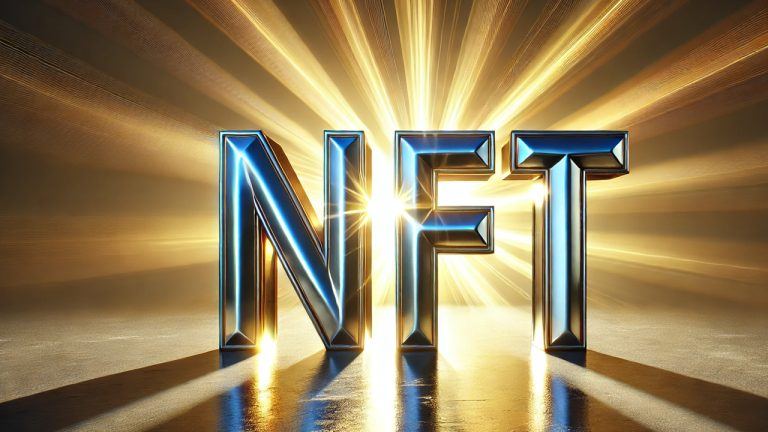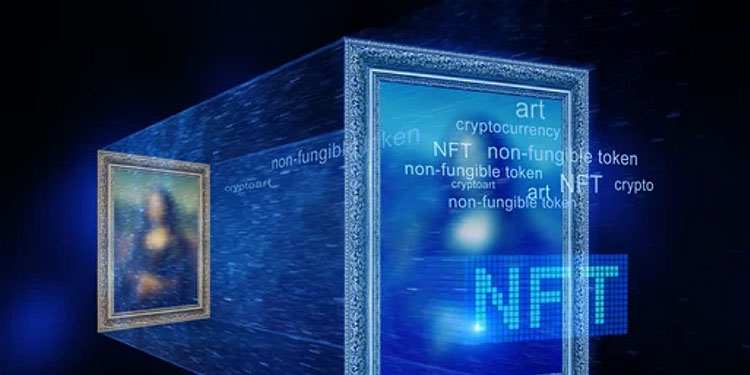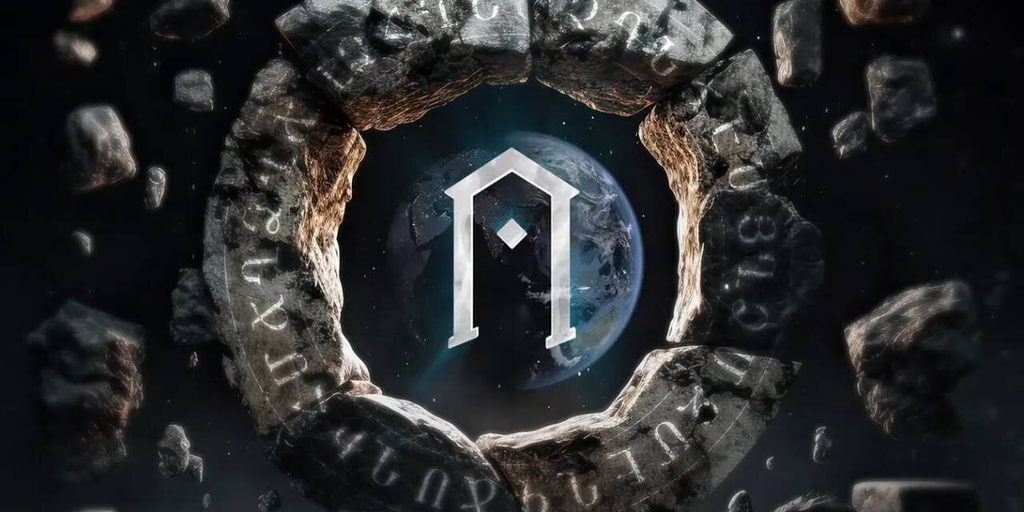You’ve been hearing all about this digital land business and thought, “Wait a second, why would anyone pay real money for fake property?” Well, my friend, buckle up, because we’re about to take a hilarious journey through the wild world of digital real estate, where you can’t build a treehouse or throw a pool party, but you can flip, rent, and develop land in an entirely virtual universe. Welcome to the next level of real estate engagement, where pixels are the new beachfront properties.
Now, before you start questioning your sanity, it’s important to know that people are actually making real money off this stuff. In fact, the digital real estate market is booming, with some virtual land selling for millions. Yes, that’s millions, as in enough to buy a real-world mansion, but instead, you’re getting virtual dirt.
Why would anyone want to buy virtual land?You’re probably thinking, “Why would anyone spend real money on something that doesn’t actually exist?” Here’s why:
Speculation: Some funders believe that just like physical real estate, virtual land will appreciate in value. Think of it as the Florida Swampland of the future—buy it cheap and hope someone builds a digital Disneyland next door. Marketing: Major companies are starting to buy virtual land to market their brands in the metaverse. Nike, for example, has engaged in virtual real estate to build branded digital experiences. Imagine walking through a Nike store in the metaverse, trying on virtual sneakers. Hosting Virtual Events: Some digital landowners are using their plots to host virtual events like concerts, meetings, or fashion shows. Forget about selling out stadiums—why not sell out a virtual nightclub where nobody ever spills their drink?And to illustrate this, for exemple, in 2021, a digital plot in Decentraland sold for a whopping $2.4 million. Yes, you read that right—$2.4 million for a plot of land that exists entirely within a computer. What’s even more surprising is that the buyer plans to turn this plot into a virtual shopping district. Whether it will be filled with virtual stores selling NFTs or digital hats, only time will tell.
If you think digital land is cheap just because it’s not “real,” think again. The prices for digital real estate can range from a couple of hundred dollars to millions, depending on location, size, and platform. Sounds familiar, doesn’t it? Even in a virtual world, location is everything. If your plot is next to Snoop Dogg’s virtual mansion (yes, that’s a thing), it’s worth more than some random plot on the outskirts of Digital Nowhere.
Digital lands prices in 2024: A prime plot in Decentraland can go for around $2,000 to $10,000 depending on its proximity to popular areas. In The Sandbox, digital land near high-traffic areas or celebrity-owned plots can fetch anywhere from $5,000 to $1 million.But beware—like all speculative engagements, digital land is volatile. During the boom in late 2021 and early 2022, plots that were bought for $13,000 dropped to just $2,000 within months. You could either become a digital land baron or the proud owner of an overpriced square of virtual ghost town.
Just like in the real world, not all real estate is created equal. Some digital land plots will skyrocket in value, while others will leave you with a digital dud. Here’s a look at some of the risks involved:
Market volatility: The digital land market is still young, and prices can swing wildly. It’s like participating in cryptocurrency—except instead of Bitcoin, you’ve got pixelated grass. Limited demand: While the metaverse is growing, it’s still a niche market. What happens if interest in the metaverse wanes, or worse, if people realize they’d rather spend time in the actual world? Scams and security risks: As with any market driven by hype and speculation, there are scams. Make sure you’re buying from a reputable platform and doing your due diligence. After all, you wouldn’t want to be swindled out of $10,000 for a virtual plot that vanishes into thin air—or thin code. Real-world example of success (and failure) Success story: Republic Realm (now called Metaverse Group) made headlines when they bought a plot of digital land in Decentraland for $4.3 million. They plan to turn this space into a luxury shopping district. If all goes well, they could make a fortune off virtual rents and digital shopping experiences. Failure: On the flip side, many people who bought during the initial hype have seen their engagements dwindle. In 2022, when the market took a nosedive, some digital landowners were left holding plots that had depreciated by 80%. Best NFT Digital Lands to buy right now for 2024 in the Metaverse: 1. EarthMetaEarthMeta offers an unparalleled experience in virtual land ownership, seamlessly blending real-world geography with the immersive possibilities of the digital realm. As previously mentioned, EarthMeta has quickly positioned itself as a leader in this space, allowing users to acquire digital plots that mirror actual locations—imagine owning a virtual piece of iconic cities like Paris or New York. The platform’s detailed, map-based interface makes it easy to identify and purchase land, offering a smooth and engaging experience. Operating securely on blockchain technology, it ensures that all transactions are verified and transparent, giving users confidence in their digital ownership.
Beyond being a marketplace, EarthMeta cultivates a thriving ecosystem where users can design and personalize their virtual lands into homes, businesses, or leisure spaces. Whether you want to recreate a famous landmark or build a dream project, EarthMeta provides the tools and flexibility to bring those visions to life. The platform’s comprehensive ecosystem features components such as the EarthMeta Core for managing assets, a lively marketplace for trading properties, and its native EMT token that supports various activities like staking and trading. Furthermore, the augmented reality app enriches the experience by allowing users to visualize their digital properties in real-world settings.
Incorporating artificial intelligence, EarthMeta goes beyond basic virtual land management, offering personalized insights and recommendations to empower users. This intelligent integration, combined with a user-friendly interface, sets EarthMeta apart from other metaverse platforms like Decentraland and The Sandbox. Its unique features include multi-polygon land configurations and private acquisition options, all while maintaining a competitive tax rate of 2% on land transactions, making it an attractive choice for those seeking a sophisticated yet practical digital environment.
More than just a virtual space, EarthMeta serves as a dynamic platform with real-world applications, offering users the chance to establish businesses, participate in an active digital economy, and make data-informed decisions using AI tools. The blend of virtual and augmented reality capabilities creates immersive experiences that keep users engaged and enhance the potential for creativity. This innovative approach places EarthMeta at the forefront of digital land ownership, appealing to users who seek both practicality and imagination within the growing metaverse space.
2. SandboxThe Sandbox stands out as a leading force in the metaverse real estate market, offering a creative and engaging experience distinct from platforms focused on replicating real-world geography. The Sandbox allows users to buy, build, and monetize digital land known as LAND using its native cryptocurrency, SAND. Each piece of LAND is an ERC-721 token on the Ethereum blockchain, sized at 96 meters by 96 meters, giving owners the ability to terraform and shape their plots. With a total of 166,464 LANDs available, around 123,840 are open to the public for purchase, providing ample space for creative ventures.
The platform offers two primary types of LAND: regular and premium. Regular LAND tends to be less trafficked and often features basic structures, while premium LAND is located strategically near social hubs and key partners, drawing in more visitors. These premium plots hold potential for generating revenue through avenues like paid games, rentals, and advertising spaces. The Sandbox encourages users to publish Play-to-Earn games, making it an appealing option for those looking to explore passive earnings in a gaming-oriented metaverse.
The Sandbox’s voxel-based design and supportive community create a vibrant environment for creativity. Users can produce and share art, interactive experiences, and games, making it ideal for artists, developers, and entrepreneurs. With backing from major brands like Atari and celebrities such as Snoop Dogg, the platform has gained credibility and momentum within the gaming community. Its user-friendly tools and monetization options have cemented The Sandbox as a preferred destination for those seeking to create and thrive in a dynamic digital world.
3. DecentralandDecentraland stands as a pioneer in the metaverse real estate space, offering a completely decentralized virtual world where users can buy, develop, and monetize digital land. Built on the Ethereum blockchain, each plot, known as a parcel, is represented as an NFT, with transactions facilitated using the platform’s cryptocurrency, MANA. The platform has witnessed substantial growth in virtual property value, with parcels once sold for $20 now reaching prices of over $3,500, highlighting the increasing demand and appeal of this virtual world.
In Decentraland, virtual properties vary from corporate headquarters to entertainment venues like casinos and billboards, offering owners opportunities to build immersive experiences and attract visitors. The value of each parcel is influenced by factors such as its location, surrounding developments, and the experiences built upon it. Premium areas like the Fashion Street district have caught the attention of major brands, including Coca-Cola and Sotheby’s, cementing Decentraland’s reputation as a commercially attractive platform for those seeking to establish a digital presence.
In a notable example from 2021, a 116-parcel plot was purchased by Tokens.com for a record-breaking €2.49 million, with plans to develop it into a hub for digital fashion. This transaction underscores the potential for lucrative ventures within Decentraland, especially in popular districts where high-traffic establishments like nightclubs and casinos are prevalent. According to Sam Hamilton, Creative Director of the Decentraland Foundation, the true value lies in the experiences crafted on the land, as areas with higher visibility and activity tend to generate greater engagement.
Looking ahead, Decentraland’s future appears promising with advancements in technology poised to enhance the platform’s aesthetic and interactive elements. Innovations such as AI integration for texture development and new virtual reality (VR) headsets aim to elevate the immersive experience. Additionally, the introduction of haptic gloves by Meta is set to allow users to physically interact with the virtual environment, opening up new avenues for engagement. These advancements reflect the rapid evolution of the metaverse and solidify Decentraland’s position as a compelling choice for digital real estate enthusiasts.
4. Earth2Earth2 presents a bold vision of digital land ownership by offering a virtual platform that aims to recreate a detailed, interactive replica of our planet. Positioned as a Massively Multiplayer Online (MMO) game, Earth2 promises an experience where users can own, develop, and interact with virtual lands modeled after real-world locations. The platform divides Earth’s geography into digital plots, which can be bought, sold, and shaped to match the owner’s vision of these locations, appealing to users who are keen on reimagining familiar spaces in a digital format.
However, while Earth2 ambitiously aims to offer immersive gameplay and experiences, the current state of the platform is more focused on trading digital land, with limited interactive features available at this stage. Recently, Earth2 has integrated blockchain technology into its project, signaling potential advancements in how digital land ownership and transactions could evolve in the future. Despite this, the lack of existing gameplay has drawn criticism, particularly from established game developers.
In a notable incident, Earth2 released a tech demo, which was met with skepticism and promptly analyzed by game developer Callum Upton. After critiquing the demo, Upton was challenged by Earth2’s founder, Shane Isaac, to match the platform’s progress—a challenge that Upton ultimately met, adding to ongoing debates around the platform’s future direction and promises. While Earth2 continues its development, it remains a platform in flux, intriguing those curious about the potential of a virtual world mapped to real-world geography.
5. Somnium SpaceSomnium Space launched in 2021 and has rapidly advanced its virtual reality ecosystem, creating an immersive metaverse experience. The platform is designed to be compatible with various VR headsets, including Oculus, Vive, and SteamVR, enabling users to fully engage with its expansive digital world. Within Somnium Space, users can explore open landscapes, socialize, and build connections in a persistent metaverse that encourages interaction and creativity.
Just like Decentraland, Somnium Space offers users the opportunity to buy digital plots and develop properties within its ecosystem. Landowners have access to an intuitive design builder that allows for the creation of diverse real estate projects, from digital homes to virtual event spaces. This flexibility in design and construction provides landowners with creative freedom not bound by traditional constraints, encouraging innovative projects and social activities.
All land and real estate in Somnium Space are represented as NFTs, which guarantee ownership and transparency in transactions. The platform supports multiple devices, allowing users to access the metaverse through web browsers or native desktop software, although it currently offers full support only for Windows. For Mac users, the browser-based version provides a functional alternative.
Somnium Space also features its native VR token, CUBE, which plays a significant role in the platform’s ecosystem. Initially launched at $4.81, CUBE’s value experienced highs of $25 in late 2021, though it has since seen fluctuations and now trades at around $1.1. Despite its volatility, CUBE remains an essential element in Somnium Space’s economy, reinforcing the platform’s commitment to creating a vibrant and engaging digital world.
6. BlocktopiaBloktopia is a decentralized metaverse built on the Polygon blockchain, designed as a massive virtual skyscraper featuring 21 floors, a nod to Bitcoin’s 21 million supply cap. The unique vertical structure provides users, known as Bloktopians, with an immersive environment to explore and interact, offering diverse experiences ranging from learning about cryptocurrency to socializing and gaming. This multi-level digital city allows users to buy and develop virtual real estate, represented as NFTs, which can be rented out for passive earnings or used to host various events.
One standout feature of Bloktopia is its advertising system, where businesses can rent ad spaces called ADBLOK on digital billboards scattered throughout the skyscraper. This model enables brands to reach Bloktopia’s expanding community, creating opportunities for targeted advertising and generating revenue. Bloktopians can also earn BLOK tokens through activities such as staking, attending events, or engaging in games, enhancing the interactive nature of the platform.
Bloktopia provides multiple use cases, from educational resources about cryptocurrency to opportunities for revenue through virtual real estate. The platform frequently hosts immersive presentations by crypto influencers in its virtual auditorium, offering engaging content and connecting users with the latest in the crypto world. BLOK, the platform’s native token, plays a crucial role in the ecosystem, allowing users to purchase land, participate in governance, and buy virtual goods.
Backed by notable partnerships with companies like Animoca Brands and Polygon, and led by CEO Ross Tavakoli, Bloktopia has garnered significant attention in the crypto-metaverse space. With over 300,000 followers and growing interest in its digital real estate, Bloktopia is solidifying its position as a dynamic hub in the emerging world of virtual property and community interaction.
Final thoughts
The rise of digital lands represents a shift in how people view ownership and community in the digital age. With platforms like EarthMeta, Sandbox, Decentraland, Earth2, Somnium Space, and Blocktopia offering diverse environments and experiences, there are plenty of opportunities for users to explore and establish their presence in these virtual worlds. As these platforms continue to evolve, the appeal of owning and creating within digital lands is only expected to grow.
What is the best digital land to buy in 2024?In 2024, EarthMeta leads the charge as the best digital land to buy. EarthMeta’s approach to virtual real estate is revolutionary, as it mirrors real-world locations with extraordinary precision. Users can own digital replicas of cities like New York, Paris, or even entire countries. EarthMeta goes beyond just owning land—it integrates augmented reality (AR) and artificial intelligence (AI), allowing for immersive experiences that can be personalized and monetized. This platform combines the tangible appeal of owning iconic landmarks with the limitless potential of the metaverse. With the metaverse market projected to skyrocket in the coming years, EarthMeta offers significant growth potential for investors.
Other strong contenders include Decentraland and The Sandbox, which are also top platforms for virtual real estate, offering vibrant communities and opportunities for development. However, EarthMeta’s combination of real-world geography and virtual land makes it the best digital land investment in 2024.
Which virtual land project offers the highest potential returns?EarthMeta offers the highest potential returns in 2024 due to its innovative concept of linking digital land ownership to real-world locations. By allowing users to buy and trade digital cities, monuments, and landmarks, EarthMeta creates a scarcity-driven market where prime virtual land could see substantial appreciation. Its user-friendly platform, combined with AR and AI integration, also enables property development and monetization, further boosting its potential returns. With the metaverse market poised for massive growth, EarthMeta provides a unique opportunity to capitalize on both the metaverse and real estate trends.
Additionally, The Sandbox and Decentraland are solid options for those looking to invest in virtual land. These platforms are well-established and backed by strong communities, offering opportunities for creative projects, gaming, and commerce. However, EarthMeta’s unique connection to real-world geography and immersive technology gives it the edge when it comes to long-term returns.
What is the top metaverse platform for buying digital land?The top metaverse platform for buying digital land in 2024 is probably EarthMeta. This platform provides an unparalleled experience by replicating real-world cities and landmarks in the metaverse. With EarthMeta, users can own virtual plots that correspond to actual locations on Earth, offering a sense of realism that other platforms don’t provide. The platform’s use of blockchain technology ensures secure transactions, and its AR and AI integrations allow for enhanced interaction with digital assets. Whether you want to own a piece of Paris or develop virtual businesses, EarthMeta offers a unique combination of creativity, technology, and real-world ties.
For those seeking more creative freedom in a game-centric environment, The Sandbox is another excellent platform. Known for its voxel-based design, it enables users to build, develop, and monetize their land, with support from major brands and celebrities.
Which digital land is expected to boom?EarthMeta is expected to see significant growth as it merges digital land ownership with real-world locations. This platform offers digital replicas of famous cities and landmarks, making it a unique opportunity. As the metaverse expands and more users seek realistic, immersive experiences, EarthMeta’s ability to link the physical and digital worlds sets it up for success. The platform also includes built-in monetization features like staking, trading, and property development, which further increase its appeal.
Other platforms expected to boom include Decentraland and The Sandbox, both of which have seen high-profile land purchases and strong community engagement. Somnium Space is another up-and-coming platform, offering VR integration for an even more immersive experience. However, EarthMeta’s innovative approach to blending real-world locations with virtual assets gives it a distinct advantage in terms of future growth.
This is a sponsored article. Opinions expressed are solely those of the sponsor and readers should conduct their own due diligence before taking any action based on information presented in this article.




















